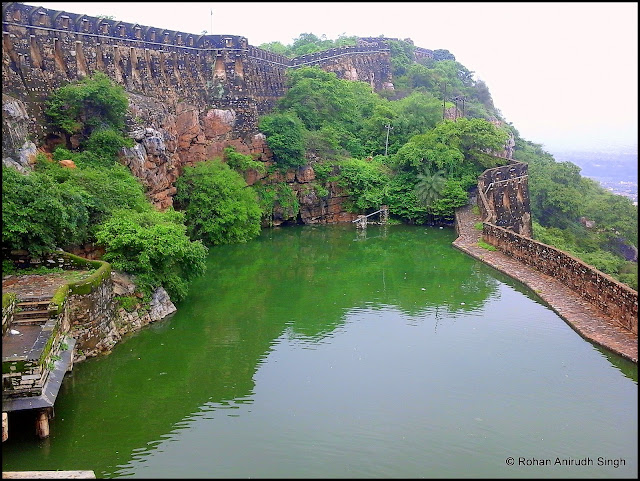Swami Vivekananda (Source - Wikipedia)
Swami Vivekananda was a monk and a philosopher. He was born on 12th January 1863 CE (in Calcutta) and today the world is celebrating his 151st Birth Anniversary. Amongst many of his famous deeds, his introduction of Hinduism at the Parliament of World's Religion in Chicago in the year 1893 CE is remembered across the world by many. It was thanks to the hundreds of conventions and lectures addressed by him, in the west, that the Hindu concepts of Yoga, Transcendental Meditation e.t.c. were embraced warmly by the people of the west. He founded the Ramakrishna Math and the Ramakrishna Mission, both named after his guru.
Vivekananda Rock in Tamil Nadu, located 50 metres off the mainland of India, is the spot where Swami Vivekananda meditated in the winter of 1892 and attained enlightenment. A memorial, seen in the pic, stands to commemorate that incident.
The reason why he features in Path Rarely Taken - The Travel Blog is because he, as a wandering monk traveled across the lengths and breadths of India (from Ayodhya to Ernakulam, from Srinagar to Kanyakumari, from Lahore to Sri Lanka and across America and England) for five years from 1888 CE to 1893 CE to understand the religious and (the prevalent) social norms of those times and to give lectures. He didn't travel because he had some business to do, he traveled because he wanted to 'see' unlike others who travel to see only what they want to see; a salient feature of a true traveler !
An illuminated Vivekananda Memorial, on Vivekananda Rock at nighttime.
He travelled by foot and by the means of railway (with just a couple of books, a staff and his water pot along with him) and even though the purpose of his travels were religious in nature (just like Hiuen Tsang and Fa Hien) he had an open mind, an open heart, the curiosity to know, the intelligence to understand and the wisdom of not judging anyone. These qualities, I personally believe, are present in only those people who are true travelers by heart !
Path Rarely Taken - The Travel Blog pays respect to his eminence, Swami Vivekananda (a true traveler), on his 151st Birth Anniversary !
.......































